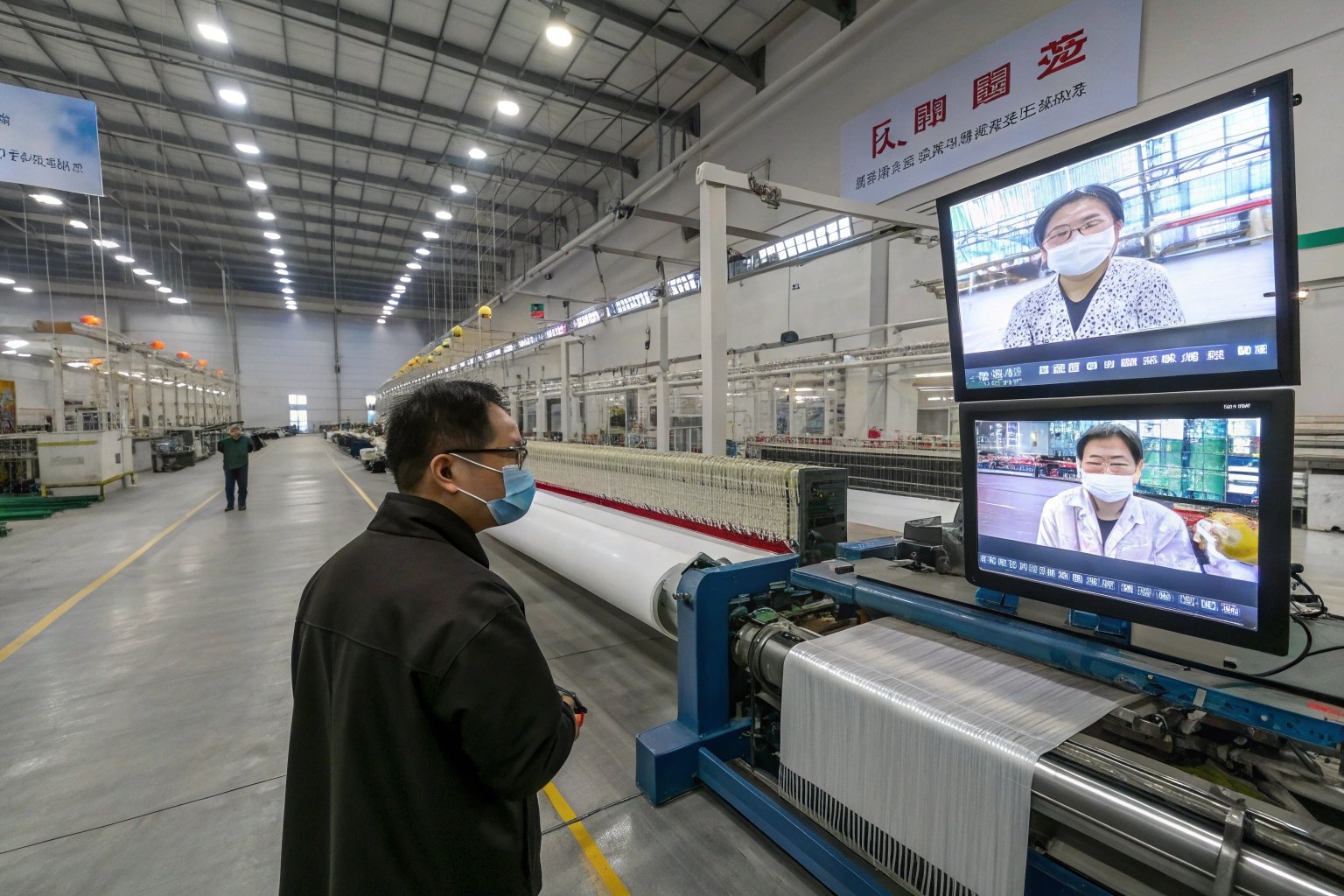Choosing the right fabric mill is crucial for product quality, lead times, and brand reputation. But what if you're a small to medium-sized buyer sourcing internationally with no time or budget for in-person visits? That’s where virtual factory tours come into play. These digital experiences are transforming the way brands evaluate textile suppliers—making it easier, faster, and more transparent than ever.
Virtual factory tours allow global buyers to evaluate a fabric mill’s machinery, workflow, and compliance standards remotely—through live streams, 360° walkthroughs, or recorded video tours. At Fumao, we've guided dozens of clients through virtual assessments to help them make confident, cost-effective decisions.
Still unsure how to approach a virtual inspection? In this guide, I’ll share how to identify trustworthy mills, what red flags to look for, and which technologies are raising the bar in virtual sourcing.
What Should You Look for in a Virtual Mill Tour?
The goal of a virtual mill tour is to replicate the insight you’d get from walking the floor yourself. It should showcase the factory’s equipment, staff, materials, and quality control practices in real time or in high-quality video.
Focus on evaluating the mill’s infrastructure, workflow organization, cleanliness, production capacity, and compliance signage during a virtual tour. These elements reveal more about a mill’s professionalism than polished presentations or certificates alone.
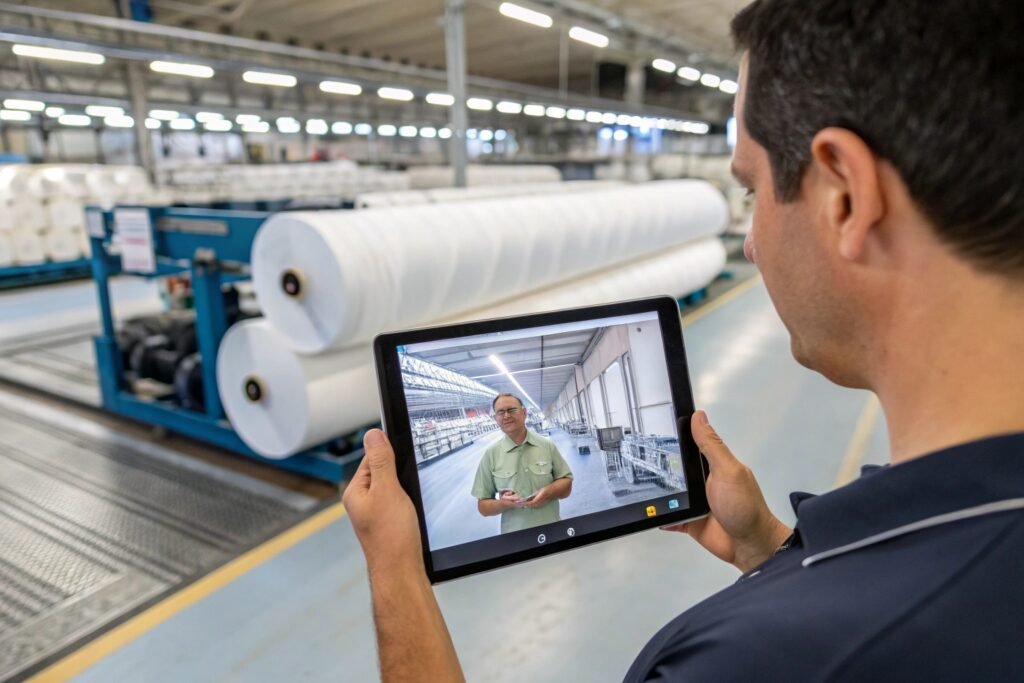
Can You Really Judge Quality Without Being Onsite?
Yes—with the right structure. Look for high-resolution visuals of weaving, dyeing, finishing, and packing areas. Ask the supplier to zoom into label details, machine dashboards, and real-time production stats. Reliable partners will be ready to demonstrate material inspections, equipment calibration, and even textile lab tests on camera.
At Fumao, we’ve set up walk-through stations covering loom setups, greige inspection zones, dye batch logs, and embroidery units. For clients in the US and Germany, we even show our QR code-tracked fabric rolls that link to QC data sheets hosted securely online.
What Are Signs of a Poorly Prepared Mill?
Low lighting, grainy video, or evasive answers are obvious red flags. But so is lack of structure: if the tour jumps randomly between departments or avoids close-ups of machinery or labels, that’s a sign the mill may be hiding outdated tech or subpar conditions. If they refuse to answer questions on staff size, output volume, or compliance audits, walk away.
Which Technologies Make Virtual Tours More Reliable?
The best virtual factory tours go beyond Zoom. Thanks to advances in video capture and cloud-based data integration, digital sourcing tools can now offer near-complete visibility into a mill's operations.
Technologies like 360° cameras, smart factory dashboards, and integrated document sharing make virtual tours more immersive and data-rich for buyers. This helps reduce uncertainty and improves supplier accountability.
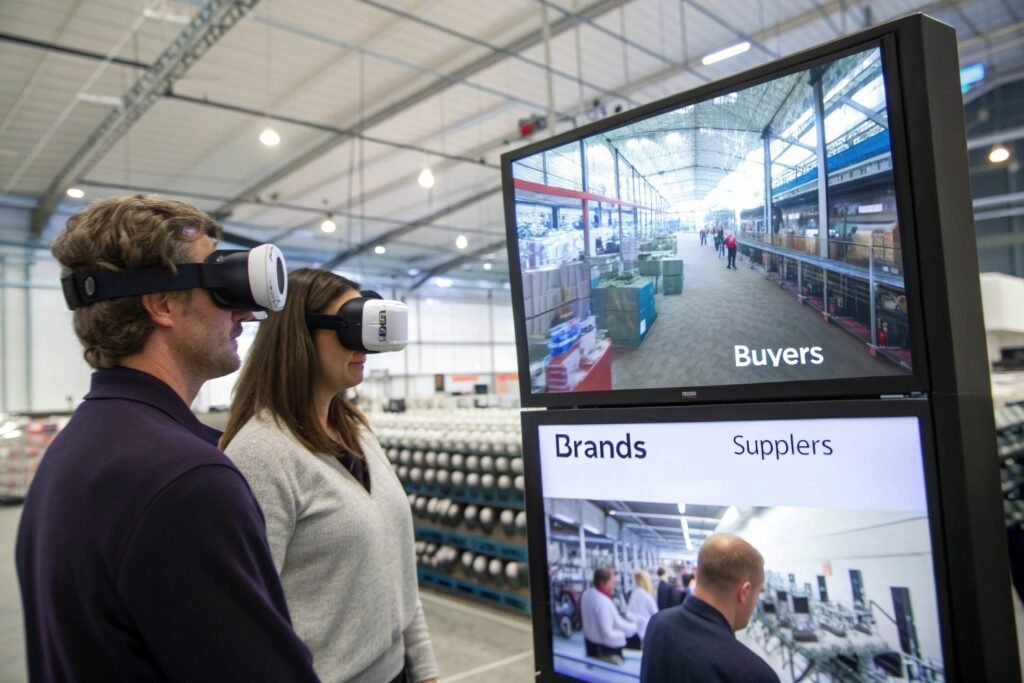
What Platforms Do Leading Suppliers Use?
Some factories use Matterport to build 3D walkthroughs of their facilities. Others use smart glasses like RealWear for live tours guided by onsite engineers. At Fumao, we combine Zoom calls with integrated Google Drive folders containing compliance scans, test reports, and real-time updates.
We also use Trello boards to track sample progress and inspection checkpoints for each client. This way, even if you’re 8,000 miles away, you can monitor development like a local.
Are AI Tools Used in Virtual Factory Monitoring?
Yes—especially for tracking production output and quality metrics. Some suppliers employ AI-driven defect detection on their looms or dye lines. These systems flag inconsistencies in color or weave tension. While not visible in every virtual tour, asking your supplier to show a demo of these dashboards adds credibility.
For instance, our finishing unit uses Uster technology to report weaving flaws in real time. We’ve had clients request screen shares of Uster reports during their digital inspections, helping them verify consistency without stepping foot in China.
How Do You Evaluate a Mill’s Sustainability Claims Virtually?
Sustainability is more than a buzzword—it’s a procurement requirement for many US and EU retailers. But verifying it remotely takes more than checking a PowerPoint slide.
Ask to virtually inspect water treatment systems, chemical storage, and organic material warehouses. Request visual proof of GOTS, OEKO-TEX®, or Bluesign® documents and on-site signage. True green factories won’t hesitate to show the infrastructure behind their claims.
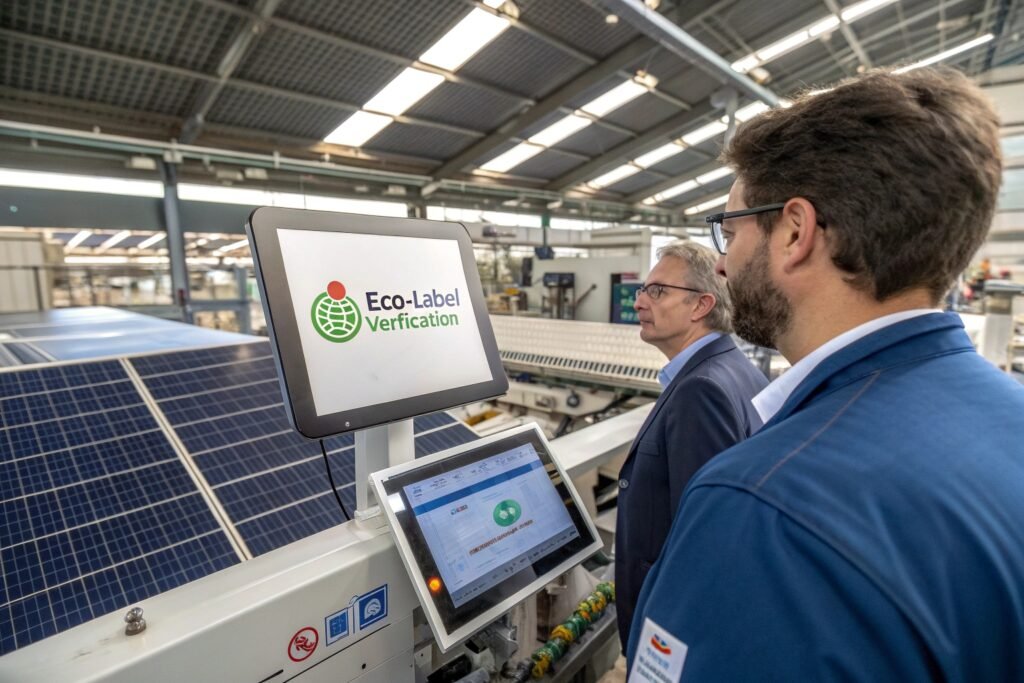
Can Certifications Be Trusted If You Only See PDFs?
PDFs can be forged. Instead, ask to see framed certificates via the tour camera, and request certification number lookups directly on the issuing body’s website. Some audits like BSCI even offer downloadable audit summaries that list violations or risk levels. A responsible supplier will send those unprompted.
We once had a US client who was skeptical of a GRS (Global Recycled Standard) claim. During our tour, we opened our cotton fiber bags live and showed their GRS tags with batch numbers. We also scanned the barcode using our QC app to reveal the certification traceability record on camera.
What Environmental Areas Should You Prioritize?
Focus on chemical management, wastewater handling, and energy efficiency. If a supplier claims “zero discharge,” ask them to show the treatment plant in operation. If they mention solar energy, request a rooftop view. Transparency builds trust—and ensures you won’t face greenwashing backlash in your marketing.
How Can You Compare Multiple Mills Through Virtual Visits?
If you’re sourcing from different countries or regions, virtual tours let you evaluate multiple factories in a short timeframe. But how do you make apples-to-apples comparisons?
Use a consistent evaluation checklist that covers factory size, machinery brand, capacity, certifications, sampling speed, communication, and QC records. Score each mill based on video clarity and responsiveness. This helps you make objective decisions beyond pricing alone.
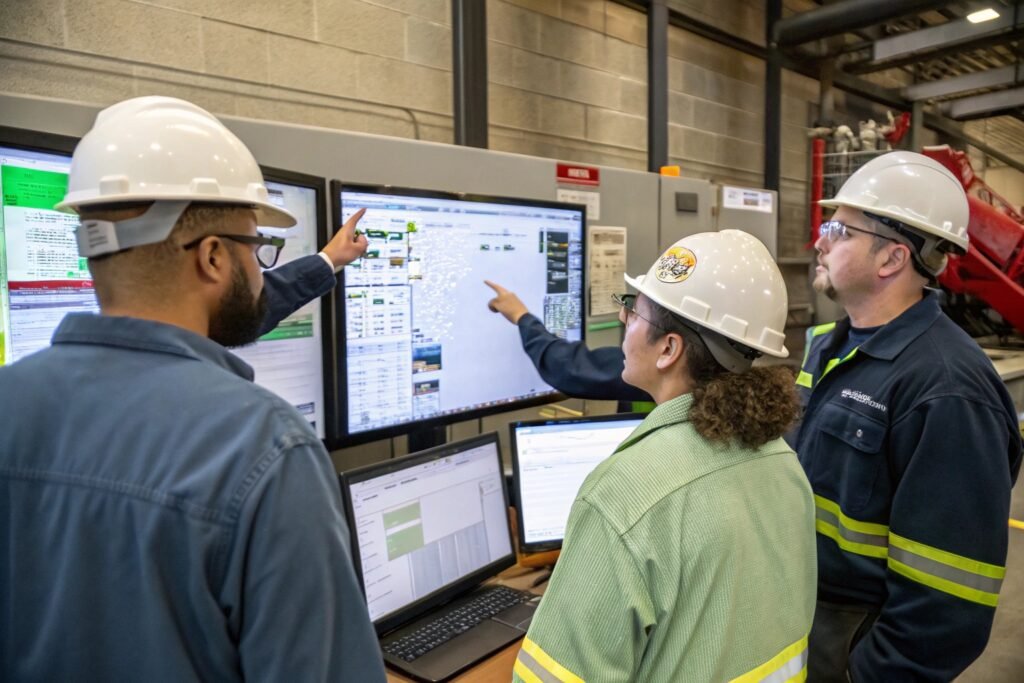
What Criteria Should You Use?
Here’s a simple matrix we provide our clients:
| Criteria | Weight (%) | Mill A | Mill B | Mill C |
|---|---|---|---|---|
| Machinery Modernity | 20 | ✅ | ❌ | ✅ |
| Certification Coverage | 20 | ✅ | ✅ | ❌ |
| Cleanliness & Workflow | 15 | ✅ | ❌ | ✅ |
| Communication Clarity | 15 | ✅ | ✅ | ❌ |
| Sampling Efficiency | 10 | ✅ | ❌ | ✅ |
| Sustainability Practices | 10 | ✅ | ✅ | ❌ |
| QC Reporting Access | 10 | ✅ | ❌ | ✅ |
We help brands build these scoring tools in shared Google Sheets or Notion dashboards so they can loop in multiple team members for review.
How Do You Follow Up After Virtual Tours?
Always request post-tour reports, timestamps, and updated production lead times. Ask the mill to summarize key specs seen during the video call. If you’re planning a trial order, align on lab dips or swatch delivery deadlines immediately.
Our clients often follow up using Slack or WhatsApp, but we keep all records backed up in formal emails with visuals. This dual-track communication ensures accountability and builds mutual trust from first click to final shipment.
Conclusion
Virtual factory tours are no longer optional—they’re essential. They empower buyers to assess fabric mills quickly, securely, and without geographic limits. At Fumao, we believe the future of sourcing lies in transparency, tech, and trust. Whether you’re sourcing 500 meters or 50,000, a virtual walkthrough can help you avoid costly surprises and build a more resilient supply chain. Let us guide you behind the scenes—no passport required.

